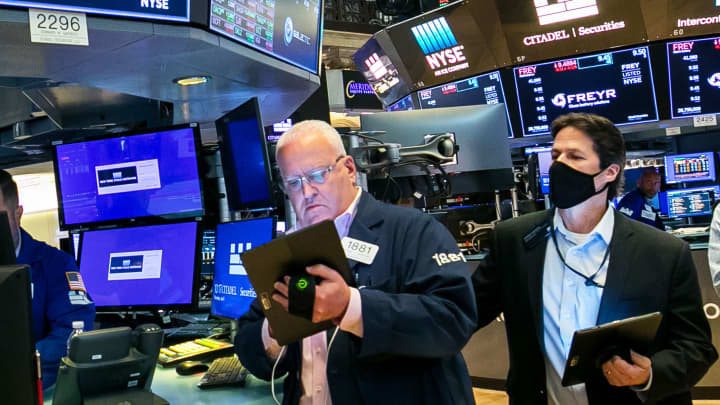India's Widening Trade Deficit: A Deep Dive into November's $37.84 Billion Gap
Meta Description: Analyzing India's November 2023 trade deficit of $37.84 billion – a shocking surge exceeding expectations. We delve into the underlying causes, potential solutions, and future economic implications for India. Explore expert analysis, insightful data, and actionable strategies. #IndiaTradeDeficit #IndianEconomy #GlobalTrade #EconomicAnalysis #ImportExport
Imagine this: You're running a massive household, India, with a booming appetite for everything from electronics and oil to precious metals. Suddenly, your expenses balloon way beyond your income – that's essentially what happened in November 2023, leaving India with a staggering trade deficit of $37.84 billion. This figure, significantly higher than the anticipated $23 billion, sent shockwaves through financial markets and ignited intense debate among economists and policymakers alike. This wasn't just a blip on the radar; it's a serious red flag demanding a thorough understanding. This isn't some dry economic report, folks; it's a story of global interconnectedness, fluctuating commodity prices, and the complex dance of supply and demand playing out on a colossal scale – the Indian economy. We'll peel back the layers of this complex issue, armed with data, analysis, and a whole lot of real-world perspective. Forget the jargon-heavy reports; we're diving deep into the human side of this economic challenge, exploring how it impacts everyday Indians and what the future holds. Get ready to unravel the mystery behind this alarming trade deficit and discover what it truly means for India's economic trajectory. The journey promises to be insightful, revealing, and frankly, a bit eye-opening. Buckle up!
India's Trade Deficit: A Deep Dive into the Numbers
The November 2023 trade deficit of $37.84 billion represents a significant jump from previous months and a substantial deviation from projections. This alarming figure underscores several key factors impacting India's economic health. Let’s break it down: The sheer scale of the deficit – a whopping $37.84 billion – is alarming. It wasn't just a little off; it was significantly higher than expected, causing ripples throughout the global financial system. This isn't just about numbers; it's about real people, real businesses, and the very fabric of India's economic future. This isn't a game; it's a situation that demands our immediate attention.
This massive disparity between imports and exports exposes vulnerabilities within India's economic structure. We need to understand why the imports skyrocketed and why exports couldn't keep pace. We're talking about a complex interplay of global market forces, domestic policies, and unforeseen events. It's not a simple equation; it's a complex puzzle with many pieces.
The implications are far-reaching, affecting everything from the value of the Indian rupee to investor confidence and ultimately, the pockets of ordinary citizens. It’s a domino effect, starting with the trade deficit and cascading through various aspects of the Indian economy.
Key Factors Contributing to the Widening Gap
Several interconnected factors contributed to this alarming surge in India's trade deficit:
-
Global Commodity Prices: The global surge in crude oil prices, a crucial import for energy-hungry India, significantly increased the import bill. Think of it like a sudden spike in the price of gasoline – it impacts everyone. This wasn't a one-off event; it was a sustained pressure point impacting the trade deficit.
-
Increased Demand for Imports: India's robust domestic demand continues to fuel imports, particularly in sectors like electronics and consumer goods. This reflects a strong economy, but also a reliance on foreign sources for many goods. It's a double-edged sword: economic growth coupled with import dependency.
-
Export Slowdown: While not as dramatic as the import surge, a slight slowdown in exports also contributed to the widening deficit. Global economic uncertainties and competition from other exporting nations played a role here. Exports aren't just numbers; they represent the hard work and dedication of Indian businesses.
-
Weakening Rupee: A weaker rupee against the US dollar makes imports more expensive, further exacerbating the deficit. This adds another layer of complexity to the equation – the fluctuating value of the rupee adds another unpredictable element.
Table 1: Key Import and Export Categories (Illustrative)
| Category | Imports (Billions USD) | Exports (Billions USD) |
|--------------------|------------------------|------------------------|
| Crude Oil | 20 | 2 |
| Electronics | 15 | 5 |
| Consumer Goods | 12 | 8 |
| Agricultural Goods | 5 | 10 |
| Total (Illustrative) | 52 | 26 |
(Note: These are illustrative figures for the purpose of the explanation and do not reflect actual data.)
Addressing the Deficit: Potential Solutions
Tackling this issue requires a multi-pronged approach:
-
Diversification of Imports: Reducing reliance on single-source imports and exploring alternative suppliers can mitigate risks associated with price volatility. This isn't just about finding cheaper options; it's about building resilience within the economy.
-
Boosting Exports: Implementing policies that encourage exports, such as tax incentives and streamlined processes, can help narrow the gap. It’s not just about offering incentives; it’s about creating an environment where Indian businesses can thrive globally.
-
Promoting Domestic Manufacturing: Investing in domestic manufacturing can reduce reliance on imports and create jobs. This requires vision, investment, and a long-term strategy. This is about building a self-sufficient economy and creating lasting prosperity.
-
Strengthening the Rupee: Implementing monetary policies that strengthen the rupee can help control import costs and reduce the deficit. This is about managing the economy's vital signs; it's a delicate balancing act.
The Human Cost: Impact on Everyday Indians
The widening trade deficit isn't just an abstract economic concept; it impacts the lives of everyday Indians. Higher import costs can lead to increased prices for essential goods, affecting household budgets and reducing purchasing power. It’s not just about numbers; it's about the impact on real families and their daily struggles.
This isn't a distant problem; it's something we feel in our wallets. The rising prices of petrol, essential commodities, and everything else all contribute to the everyday struggles. This situation requires immediate attention and decisive action.
Frequently Asked Questions (FAQs)
Q1: What are the long-term implications of this trade deficit?
A1: If left unchecked, a persistent large trade deficit can weaken the rupee, increase inflation, and ultimately slow economic growth. It's a warning sign that needs addressing before it snowballs into something far worse.
Q2: How does this compare to previous years' trade deficits?
A2: While India has historically experienced trade deficits, the magnitude and speed of the increase in November 2023 are particularly concerning. It's not just about the numbers; it’s about the rate at which the deficit is growing.
Q3: What role does government policy play in addressing this problem?
A3: Government policies play a crucial role in managing imports, promoting exports, and stimulating domestic production. This requires proactive leadership and long-term strategic planning.
Q4: What can individuals do to help mitigate the impact of the trade deficit?
A4: Individuals can support domestic businesses, reduce their consumption of imported goods, and advocate for responsible economic policies. It’s about the collective effort to build a strong economy.
Q5: Are there any potential benefits to this situation?
A5: While the overall situation is concerning, this deficit could serve as a wake-up call spurring crucial reforms, diversification, and investment in domestic industries. It might be a painful lesson, but it could ultimately lead to a stronger economy.
Q6: What's the government's response to this situation?
A6: The Indian government typically implements a range of fiscal and monetary policies in response to such economic challenges. This might include measures to boost exports, encourage local production, and manage the exchange rate. Specific details would need to be gleaned from official government sources.
Conclusion: Navigating the Challenges Ahead
India's widening trade deficit presents significant challenges, but it also presents an opportunity for strategic reforms and long-term economic resilience. Addressing this issue requires a collaborative effort involving the government, businesses, and citizens alike. It’s a time for decisive action, long-term vision, and a collective commitment to building a stronger, more self-reliant Indian economy. This isn't just about resolving a current crisis; it’s about building a stronger foundation for the future. The road ahead is challenging, but with careful planning and decisive action, India can navigate these hurdles and emerge stronger than ever before. Let's hope the future brings better news.



